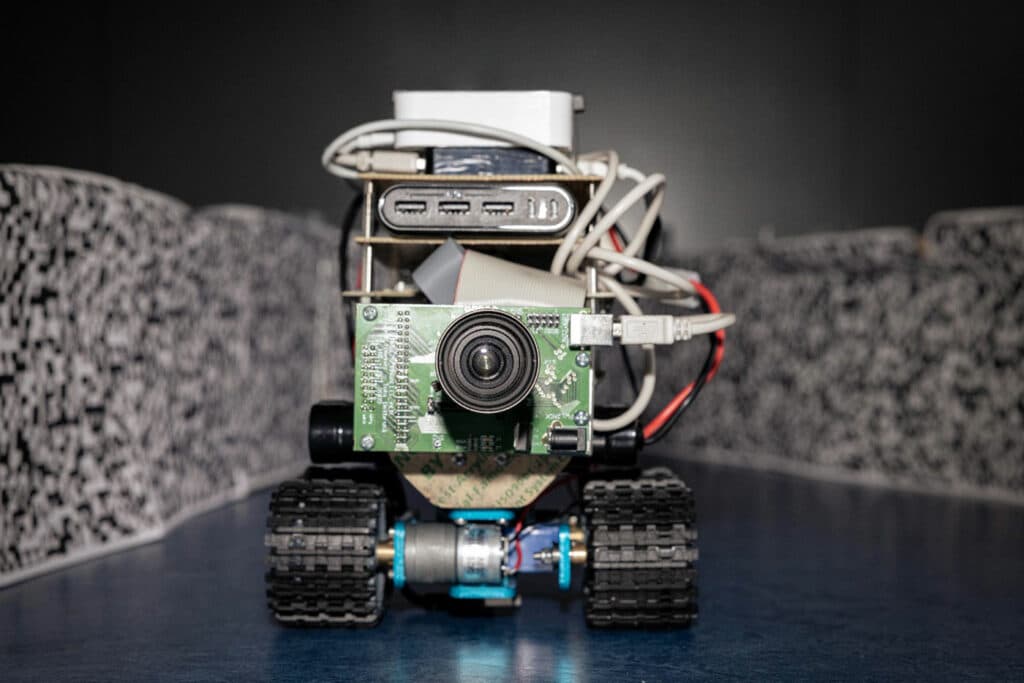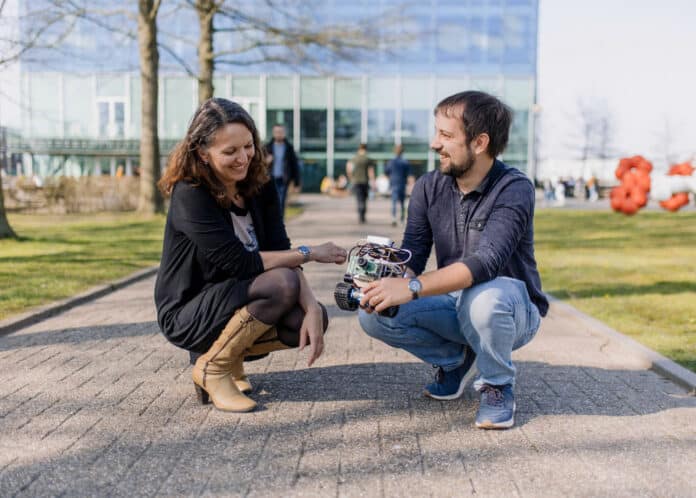Robots are becoming more sophisticated every day, but some engineers found inspiration in the brain of a tiny flying insect to build a robot that can avoid collisions efficiently.
With a brain the size of a pinhead, insects are able to carry out impressive navigational feats, such as avoiding obstacles and moving through small openings. How do they achieve this with such limited brain power?
Researchers from the University of Groningen in the Netherlands and Bielefeld University in Germany have demonstrated that understanding the inner workings of an insect’s brain can aid in the search for energy-efficient systems to apply to how robots move.
Fruit flies (Drosophila melanogaster) have remarkably simple but effective navigation skills. Despite having a small brain, they can swiftly travel along invisible straight lines and adjust their flight path to avoid obstacles. With such a tiny brain, the fruit fly has limited computational resources available to it while in flight. Scientists have even suggested that this biological model could be used to create more efficient and low-energy robots that also avoid obstacles.
“Like when you’re on a train,” said physicist Elisabetta Chicca of the University of Groningen. “The trees nearby appear to move faster than the houses far away. Insects use this information to infer how far away things are. This works well when moving in a straight line, but reality is not that simple.”
Given their limited brainpower, moving in curves can be a complex task for insects. That’s why they tend to adjust their behavior and fly in a straight line, make a turn, and then fly in another straight line. This helps them keep things manageable and navigate their surroundings effectively.
“What we learn from this is: if you don’t have enough resources, you can simplify the problem with your behavior,” Chicca explains.

Researchers from Bielefeld University have developed a small robot with the ability to process directional information and avoid collisions with obstacles in its path. They were able to mimic the neural activity of fruit flies’ brains, specifically the optical neurons T4 and T5, which process the motion of surrounding objects.
Chicca explains, “Much of Robotics is not concerned with efficiency. We humans tend to learn new tasks as we grow up, and within Robotics, this is reflected in the current trend of machine learning. But insects are able to fly immediately from birth. An efficient way of doing that is hardwired in their brains.”
The result is a compact robot designed to steer toward the area with the least movement detected. Thorben Schoepe from the University of Groningen engineered the hardware and tested it to see how it would perform. The robot could center itself between objects and navigate obstacles just like an insect in flight.
“The model is so good,” Chicca concludes, “that once you set it up, it will perform in all kinds of environments. That’s the beauty of this result.”
The team has made significant progress in the development of neuromorphic hardware in robotics through a study focused on obstacle avoidance. In the future, such a machine could potentially navigate through challenging terrain like disaster sites with minimal energy consumption. It could be equipped with different sensors to detect objects depending on their use, such as radar for detecting structureless objects.
“We developed a robot inspired by insects. It has remarkable capabilities to travel in dense terrain, avoiding collisions, crossing gaps, and selecting safe passages. These capabilities are accomplished by a neuromorphic network steering the robot toward regions of low apparent motion. Our system leverages knowledge about vision processing and obstacle avoidance in insects,” Chicca said.
Journal reference:
- Thorben Schoepe, Ella Janotte, Moritz B. Milde, Olivier J. N. Bertrand, Martin Egelhaaf, and Elisabetta Chicca. Finding the gap: neuromorphic motion-vision in dense environments. Nature Communications, 20244; DOI: 10.1038/s41467-024-45063-y
